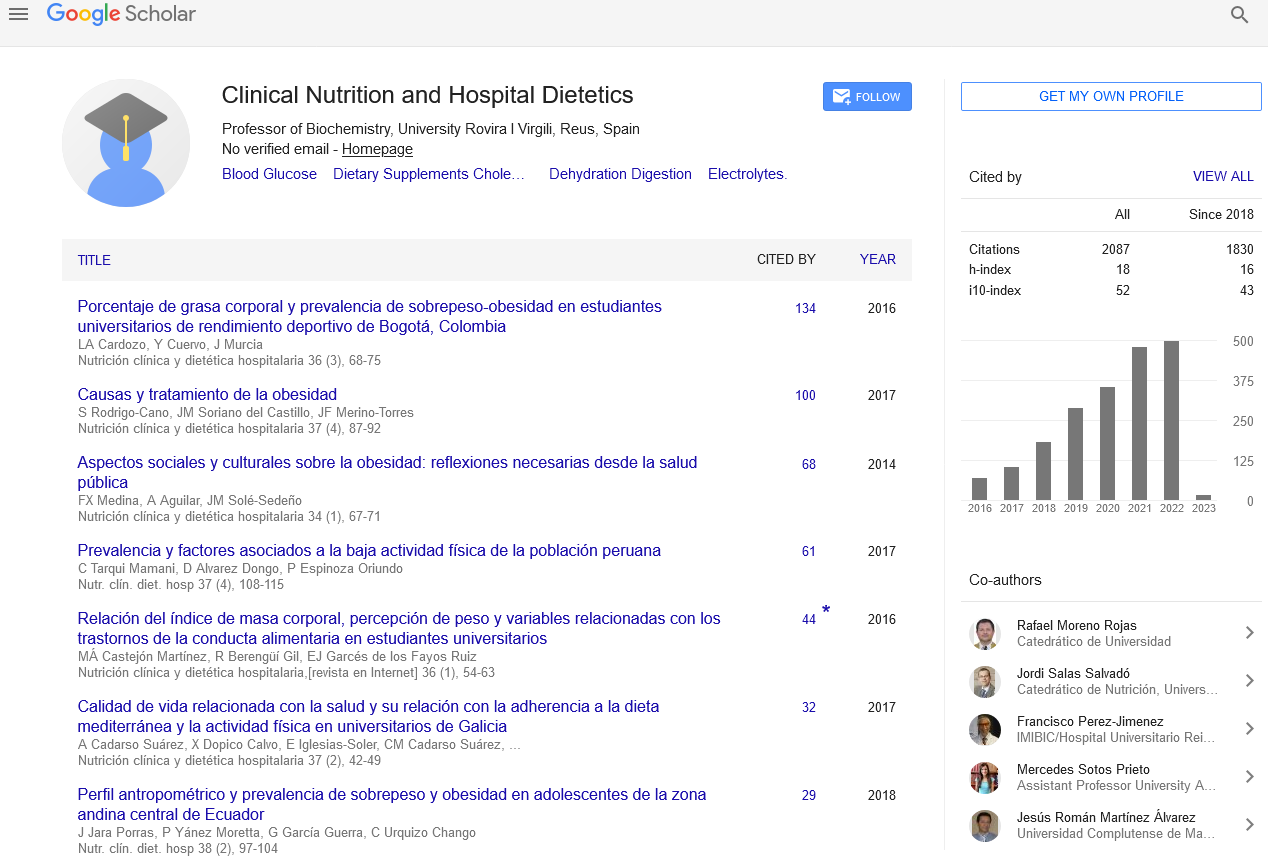Abstract
Relation among visceral adiposity index with components of metabolic syndrome in obese pediatric patients
Author(s): Ortega Cortés, Rosa1; GarcÃÂa Montalvo, Anel1; Trujillo, Xóchitl2; Barrera de Léon, Juan Carlos1; López Beltrán, Ana Laura1; Delgadillo Ruano, Martha Alicia1; Leal Cortés, Caridad ÃÂurea3
Metabolic syndrome (MS) consisting of set of metabolic and cardiovascular disorders related to insulin resistance and visceral fat. Anthropometric visceral adiposity indices are useful tools that could detect metabolic complications in obese children. Objective to determine correlation between visceral adiposity indices and components of MS in obese pediatric patients. Transversal, patients 6-16 years. Inclusion: BMI ≥ 85p, exclusion endogenous obesity, genopathies, steroid use, wheelchair and plasters. Variables: WC (waist circumference), WHtI (waist-height index), WHR (waist-hip ratio), SBP, DBP (systolic and diastolic blood pressure), triglycerides, total cholesterol, HDL (high lipoprotein density), LDL (low density lipoprotein) VLDL (very low-density lipoprotein), serum uric acid, insulin, HOMA index. international standards for variables. Statistics: frequencies, percentages, means / medium, DS / range, Pearson correlation. Results: 83 patients, median 11 years. 49 (51%) male. Average BMI 31.4 (SD 6.3). Diagnosis of visceral obesity = 96.3% by WHI; WC = 80.7% and 57.8% WHR. Correlations WC with SBP, r = 0.35, p 0.001; DBP, r = 0.29, p = 0.008; Uric acid r = 0.25, p 0.02 and LDL-C r= 0.23, p 0.029. WHI with LDL, r = 0.29, p 0.009. WHR with HDL, r 0.34, p 0.002. The WHtI was the most detected visceral adiposity and the WHR was the least diagnosed. We concluded the WC correlated with more components of MS. Significant correlations: WHtI with LDL; WHR with HDL and WC with SBP, DBP, LDL and serum uric acid.
Google Scholar citation report
Citations : 2439
Clinical Nutrition and Hospital Dietetics received 2439 citations as per google scholar report
Indexed In
- Google Scholar
- Open J Gate
- Genamics JournalSeek
- Academic Keys
- JournalTOCs
- ResearchBible
- SCOPUS
- Ulrich's Periodicals Directory
- Access to Global Online Research in Agriculture (AGORA)
- Electronic Journals Library
- RefSeek
- Hamdard University
- EBSCO A-Z
- OCLC- WorldCat
- SWB online catalog
- Virtual Library of Biology (vifabio)
- Publons
- MIAR
- Geneva Foundation for Medical Education and Research
- Euro Pub
- Web of Science
Journal Highlights
- Blood Glucose
- Dietary Supplements
- Cholesterol, Dehydration
- Digestion
- Electrolytes
- Clinical Nutrition Studies
- energy balance
- Diet quality
- Clinical Nutrition and Hospital Dietetics




